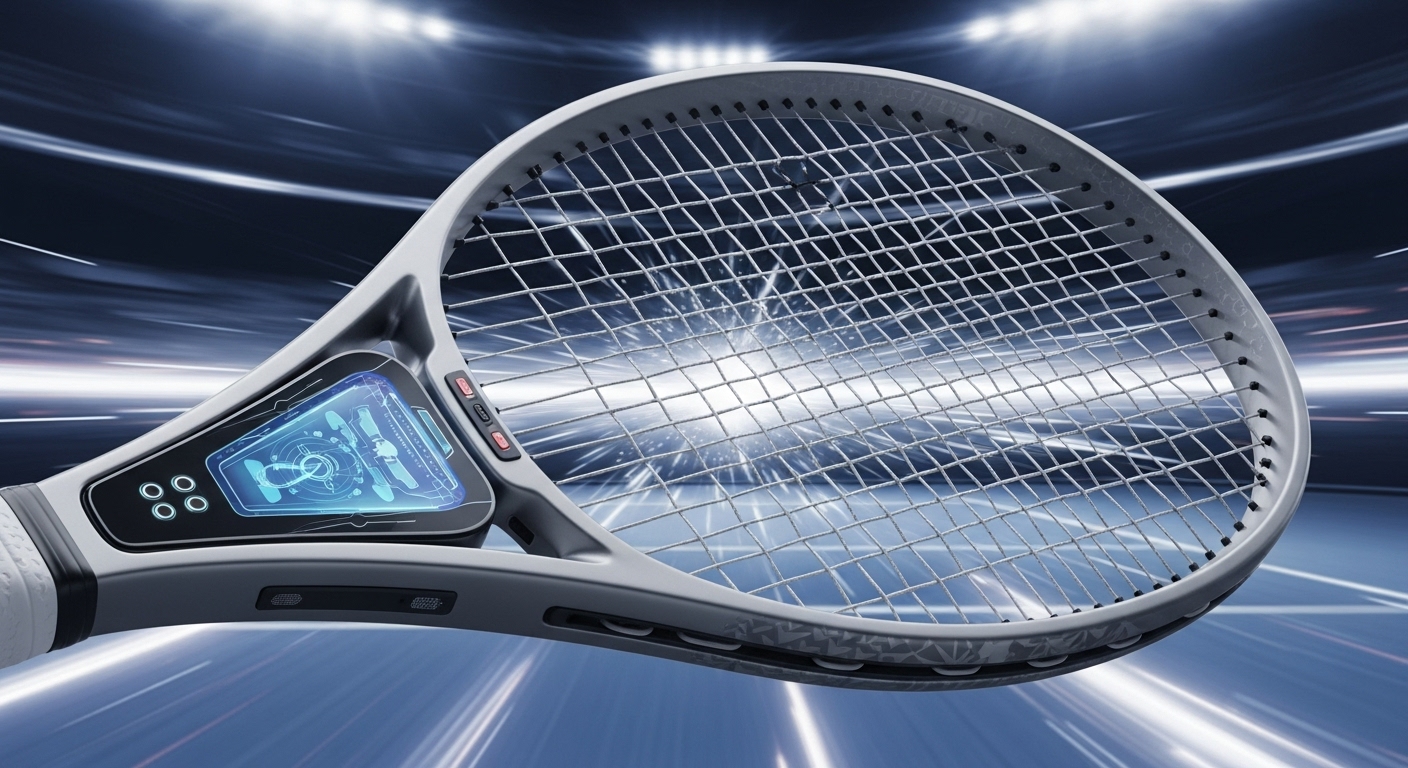In the dynamic world of sports, few pieces of equipment are as iconic, or as crucial, as the “racquet.” Whether it’s the elegant arc of a tennis swing, the lightning-fast smash in badminton, or the intense, confined rallies of squash, the racquet is the finely tuned instrument that translates skill, power, and strategic intent into decisive action. As of mid-2025, racquets across various sports continue to evolve, blending centuries of tradition with cutting-edge materials and smart technology to unlock unprecedented levels of performance and player comfort.
Anatomy of a Performance Tool: Form Meets Advanced Function
While specific designs vary significantly by sport, most racquets share fundamental components that are constantly being refined:
- Frame/Head: The outer structure, typically oval or teardrop-shaped, enclosing the string bed. Its size, stiffness, and weight distribution critically impact power, control, and forgiveness. Modern designs increasingly prioritize advanced aerodynamics to enhance swing speed and maneuverability.
- Strings/String Bed: The intricate network of woven strings (ranging from natural gut to various synthetics like polyester and multifilament) that forms the hitting surface. String tension, pattern (dense for control, open for spin), and material are crucial for maximizing power, spin potential, feel, and durability.
- Shaft/Throat: Connecting the head to the handle, its flexibility or stiffness influences power generation, stability, and shock absorption. Designers are integrating new material layups here for specific performance characteristics.
- Handle/Grip: The part the player holds. Grip size, shape, and material are critical for comfort, control, and preventing slippage. Many modern racquets offer advanced customization options for balance points and grip sizes to fine-tune the player’s feel.
A Legacy of Innovation: From Wood to Smart Composites
The evolution of the racquet is a fascinating journey of material science and engineering ingenuity:
- Ancient Roots: Early forms of “racket” sports used hands, then gloves, evolving to simple wooden paddles and frames strung with animal gut, tracing back to games like “jeu de paume” in 12th-century France.
- The Wooden Era (Up to 1970s): For centuries, racquets were predominantly made of laminated wood. These were heavy, had small head sizes, and limited “sweet spots,” demanding immense precision.
- The Metal Age (1960s-1970s): The introduction of metal frames (steel, then aluminum) brought lighter, more durable alternatives, allowing for slightly larger head sizes.
- The Graphite Revolution (1980s-Present): The game-changer was the widespread adoption of graphite (carbon fiber) composites. This material, significantly lighter and stiffer than metal, enabled larger head sizes, bigger sweet spots, increased power with less effort, and superior vibration absorption. Modern racquets are now predominantly made from complex graphite blends and other advanced materials.
Racquets Across Disciplines: Tailored for Peak Performance
Each racquet sport has unique demands that drive specific racquet designs:
- Tennis Racquets:
- Features: Larger heads (often oversized for power, mid-size for control), longer frames (up to 29 inches), and heavier weights (250-400g).
- Focus: Power generation for groundstrokes and serves, stability for absorbing heavy impacts, and forgiveness on off-center hits.
- Materials & Tech: Primarily graphite, often blended with advanced materials like graphene, basalt, or proprietary composites like Wilson’s FreeFlex technology (in the Clash series) for optimized flexibility and comfort, or Head’s Auxetic 2.0 (in the Speed series) for sensational feel and feedback. The Babolat Pure Drive Gen11 (2025) offers enhanced stability and spin, while the Tecnifibre TFight 305S 2025 is engineered for precision control.
- Badminton Racquets:
- Features: Extremely lightweight (70-100g strung), long and thin shafts, and smaller, often isometric (square-ish) heads.
- Focus: Ultra-fast swing speed for quick reflexes, whip-like action for powerful smashes, and precise control for delicate net shots.
- Materials & Tech: High-modulus carbon fiber is standard, with brands like Yonex integrating nanomaterials (e.g., Namd™) and innovative technologies (like Rotational Generator System, Power-Assist Bumper, and Super Slim Shaft in their Astrox 99 Pro 2025 and Nanoflare 1000 Z models) to reduce weight while boosting strength and responsiveness. Li-Ning’s Aerotec-Beam System promotes rapid swings while maintaining stability.
- Squash Racquets:
- Features: Smaller head sizes than tennis, often a “teardrop” or “open-throat” frame, and medium weight (90-150g). Shorter than tennis racquets to navigate confined court spaces.
- Focus: Maneuverability in tight spaces, control for precise shots, and good feel for the ball.
- Materials & Tech: Predominantly graphite composites (often blended with Kevlar, titanium, or boron for durability and stiffness). Head’s Speed 135 2025 features Octagonal Power Technology and Stringbed X-Tension for enhanced power, along with Adaptive Fan Pattern (AFP) allowing players to choose string patterns for power or control. Dunlop’s FX series also continues to innovate for power and feel.
- Other Racquet Sports: This includes the small, rubber-covered wooden paddles of Table Tennis (Ping Pong), emphasizing spin and speed (making it the most popular racket sport globally with over 300 million players in 2025), and the solid-faced, perforated racquets of Racquetball and Padel, built for power in smaller, enclosed courts. Padel, often described as a mix of tennis and squash, continues its spectacular rise in 2025, gaining millions of new players due to its accessibility and social nature. Pickleball, a blend of tennis and badminton, is America’s fastest-growing sport, popular among all ages.
The Future of Racquets in 2025: Precision Engineering and Smart Integration
As of mid-2025, the evolution of racquets continues at a rapid pace, driven by demands for increased performance, comfort, and data insights:
- Advanced Material Science: Ongoing innovation focuses on ultra-lightweight yet incredibly strong composites. New manufacturing techniques, including advanced layering of carbon fibers and integration of cutting-edge polymers, are leading to frames with enhanced stiffness where needed and improved flex for feel. Head, for instance, launched its Boom Raw racquet in April 2025, featuring bio-circular carbon fibers developed with Toray, significantly reducing fossil fuel dependency in production. Sustainable materials like bamboo, recycled plastics (e.g., Adidas’ Primeblue line made from recycled ocean plastics), and organic cotton are increasingly used in racquets and related sportswear.
- Smart Racquets and Data Analytics: Integrated sensors in racquet handles are becoming more sophisticated and prevalent. These “smart racquets” provide real-time data on swing speed, spin, impact location, power generation, and overall performance. This data, often paired with intuitive mobile applications, offers invaluable insights for players and coaches alike, revolutionizing training and performance analysis. The global smart tennis racket market alone is estimated to be approximately $200 million in 2025, projected for strong growth, driven by adoption in professional academies.
- Aerodynamic Optimization: Advanced computer modeling and wind tunnel testing are used to design frames that minimize air resistance. Innovations like aerodynamic frame shapes and specialized shaft designs are allowing for even faster swing speeds and greater maneuverability, crucial for the increasingly fast-paced nature of racquet sports.
- Enhanced Comfort and Injury Prevention: Racquet companies are investing heavily in vibration dampening technologies to reduce shock transmitted to the arm, significantly decreasing the chance of fatigue and common injuries like tennis elbow. Technologies like Head’s Auxetic 2.0 actively respond to impact, giving real-time, super-accurate feedback and enhancing feel.
- Hyper-Personalization: The ability to customize racquets is expanding. Players can tailor specifications to match their playing style, from specific weight and balance points to string patterns and grip types. This trend allows for a truly bespoke playing experience, maximizing individual performance.
The global racquet sports equipment market is projected to reach over $96 billion in 2025, with continued growth driven by rising participation, especially in emerging sports like Pickleball and Padel, and continued innovation in product technology. The racquet is, and will remain, an indispensable symbol of athletic endeavor and technological ingenuity, continuously empowering players to execute shots with greater precision, power, and comfort, making these timeless sports even more dynamic and exciting.

